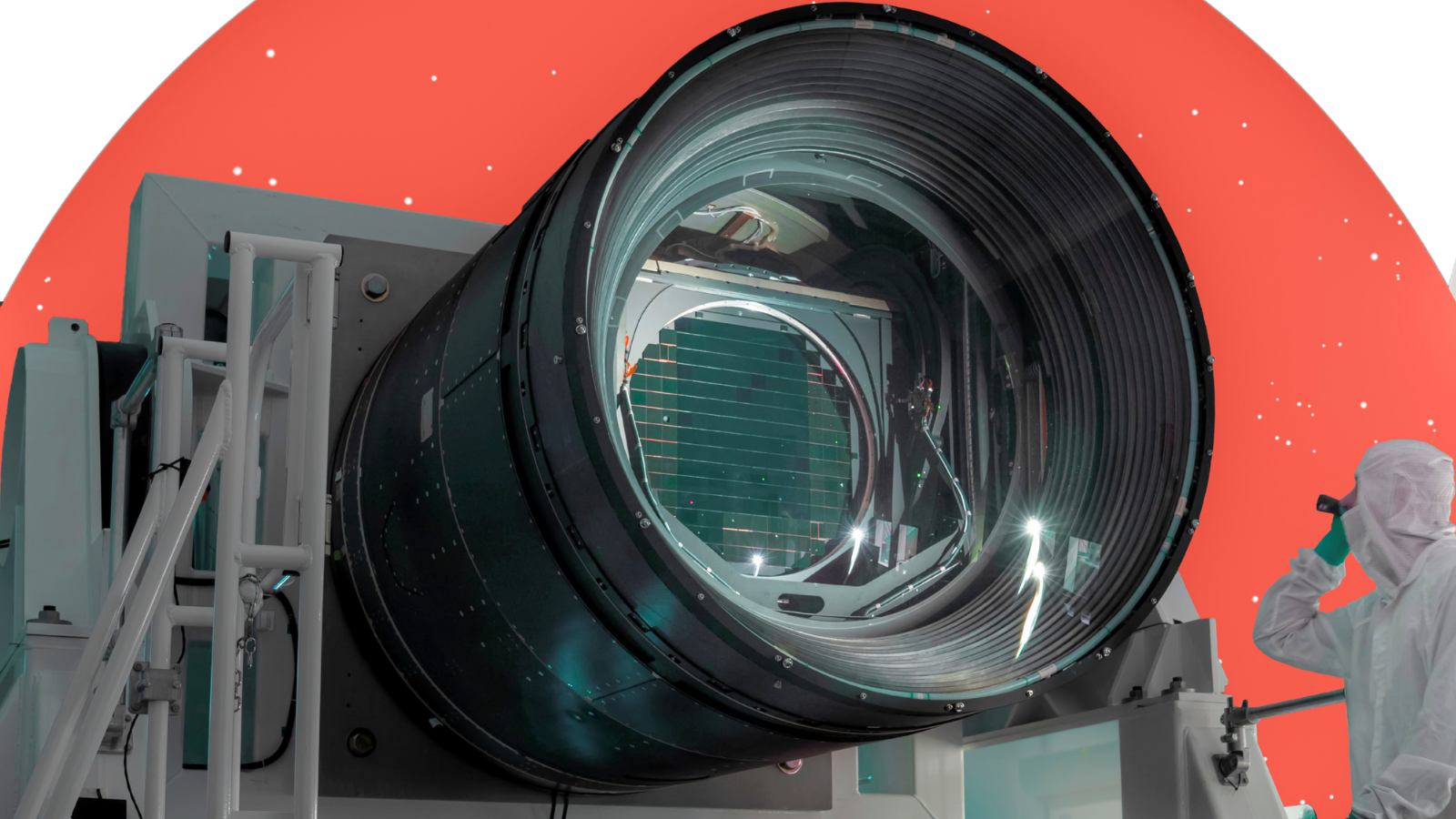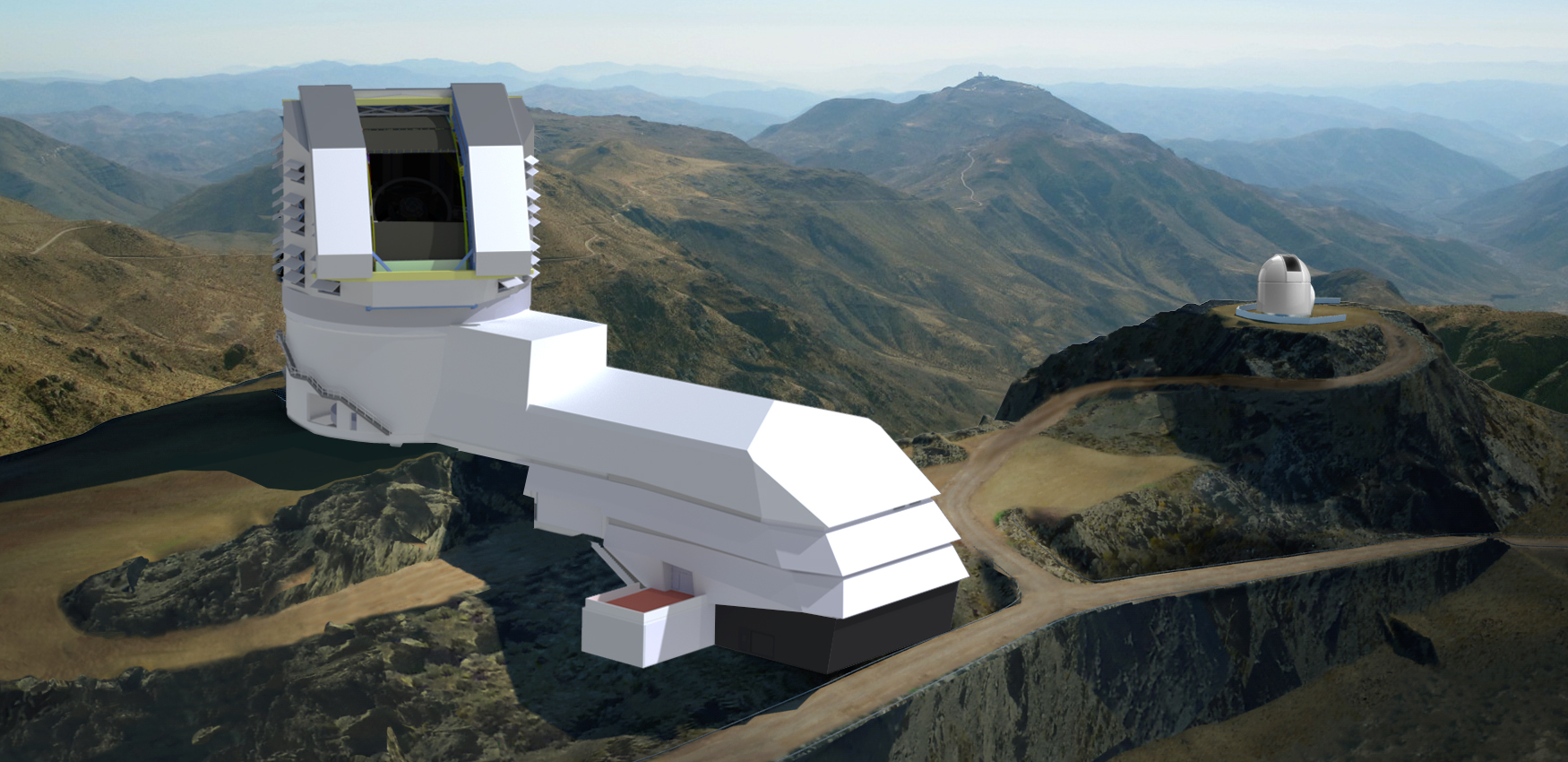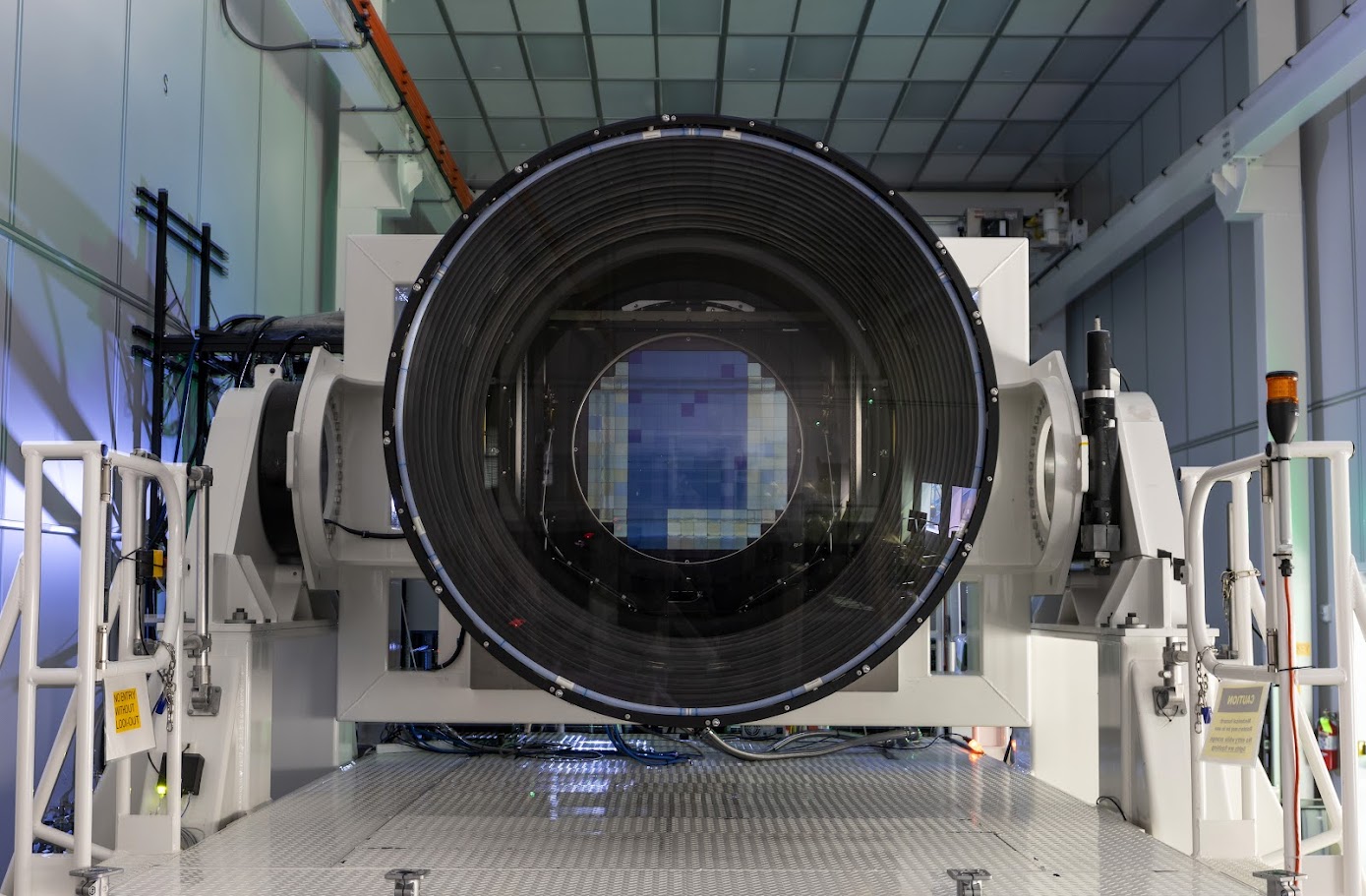The world's largest digital camera is ready to investigate the dark universe
With a 3,200-megapixel LSST camera, the Vera C. Rubin Observatory will create the "greatest movie of all time and the most informative map of the night sky ever assembled."

The Vera C. Rubin Observatory will soon begin its decade-long Legacy Survey of Space and Time, or LSST, monitoring the entire sky over the southern hemisphere thousands of times over. A mission this huge requires a camera of equal magnitude.
Fortunately, SLAC National Accelerator Laboratory is on hand to provide just that. Scientists and engineers at SLAC have officially completed the LSST camera, the largest digital camera ever built, for Rubin's pioneering 10-year survey.
The 3,200-megapixel LSST camera is the size of a compact car and weighs in at 3 metric tons, which is about half the weight of a male African bush elephant. The LSST's wide-field view will attempt to solve lingering mysteries surrounding dark energy, the force that accounts for around 70% of our universe's matter-energy content and causes the expansion of the cosmos to accelerate.
The LSST will also investigate dark matter, the mysterious substance that accounts for around 85% of all stuff in the cosmos despite being invisible to us, as well as answer other astronomical questions as it creates what Željko Ivezić, Director of Rubin Observatory's construction, describes as the "greatest movie of all time and the most informative map of the night sky ever assembled."
Related: Dark energy is forcing the universe to expand. This new observatory may show us how
"The data collected by the LSST camera and Rubin will be really groundbreaking. It will enable really incisive studies of the expansion of the universe and dark energy," Aaron Roodman, SLAC professor and Rubin Observatory Deputy Director and Camera Program Lead, told Space.com. "The LSST survey will allow us to see billions of galaxies, an estimated 17 billion stars in our own galaxy, the Milky Way and millions of solar system objects.
"We're not going to be looking at individual objects. We're going to look at everything that's available in the night sky from our mountaintop location in Chile."
Breaking space news, the latest updates on rocket launches, skywatching events and more!
Seeing the big picture again — and again
Images from powerful telescopes can often take distinctive "looks" that make them distinguishable. For instance, bright objects in James Webb Space Telescope images take on distinctive "diffraction spikes" that make the origins of these images obvious. So, what will be distinctive about the images generated by the LSST Camera and Rubin?
"Actually, that's a great question because our images are going to be really different," Roodman said. "You won't be able to see an individual galaxy as crisply as you can from a space telescope like the JWST, but what you will be able to see is a lot of the sky.
"So the amazing thing about our images will be how big they are, how much territory they'll cover across the sky, and how many stars and galaxies they will contain."
This vast size doesn't mean the LSST camera will be a slouch when it comes to detail, however.
"Its images are so detailed that it could resolve a golf ball from around 15 miles away, while covering a swath of the sky seven times wider than the full moon," Roodman added.
One of the main advantages of the LSST survey will be the fact that it repeatedly looks at the same patch of the sky over and over again. This will allow scientists to precisely monitor any changes that occur in that region over the course of 10 years.
This means someone will be watching as transient events like supernovas brighten and fade, observing curvatures of light coming from distant sources caused by the gravity of passing matter (that includes dark matter), and tracking the expansion of the very fabric of space as it pushes distant galaxies away. Those galaxies will slide away faster and faster, in fact, thanks to the influence of dark energy.
"That's my chief interest in Rubin and the LSST survey, studying the expansion of the universe and dark energy," Roodman said. "Dark energy is just our name for a phenomenon that we don't fully understand, but the data we have now is not as precise as what we'll be able to learn from Rubin."
Before the LSST Camera can help scientists play detective to investigate dark energy and other cosmic mysteries, however, it has to be transported from SLAC in Menlo Park, California to the 8,900-foot (2713 meters) peak of Cerro Pachón in the Andes. Once there, it will be hoisted atop the Simonyi Survey Telescope later this year.
It isn't just the size of the LSST Camera that makes this transportation operation tricky. The camera is also remarkably delicate, with its focal plane made up of 201 individual custom-designed CCD sensors. These are 5 microns flat, with a variation in flatness no greater than a tenth the width of a human hair. For comparison, a sheet of paper is between 50 and 100 microns thick, according to Roodman.
The gap between these sensors is around half a millimeter wide, meaning preventing them from colliding was a major challenge during manufacturing — and remains a challenge during transportation.
The team has already tested the route the LSST Camera will take using a "mass surrogate" of the same weight and shape as the camera. This proxy was fitted out with accelerometers that tested for stresses that will act on the LSST camera, including those likely to impart as it journeys to Chile via airplane.
"That test, which was very successful, and we've done a huge amount of work, you know, to reduce any uncertainty in the shipment," Roodman said. "It still might be nerve-wracking to see it loaded on a plane and sent to Chile, though."
Once the LSST is mounted in position systems that it will depend on, such as the units that will cool its image sensors to minus 148 degrees Fahrenheit (minus 100 degrees Celcius), it will be set up and rendered operational.
"We'll then do tests to check out that the camera is working well, and that the whole telescope works as an integrated system," Roodman said. "Then we have a period of 18 weeks in which we'll start taking images."
As for what the LSST Camera will image first, Roodman said a target hasn't been selected yet, but he expects this to be a patch of sky containing a large bright galaxy. He added that the release of the first LSST images to the public is currently planned for Spring next year.
"I'm very excited to see the first LSST images," the researcher concluded. "I've been working on this project since January 2011, when I first joined the LSST Camera team, and the history of the project at SLAC goes back even further. The completion of this camera and its first images have been a long time coming."

Robert Lea is a science journalist in the U.K. whose articles have been published in Physics World, New Scientist, Astronomy Magazine, All About Space, Newsweek and ZME Science. He also writes about science communication for Elsevier and the European Journal of Physics. Rob holds a bachelor of science degree in physics and astronomy from the U.K.’s Open University. Follow him on Twitter @sciencef1rst.


